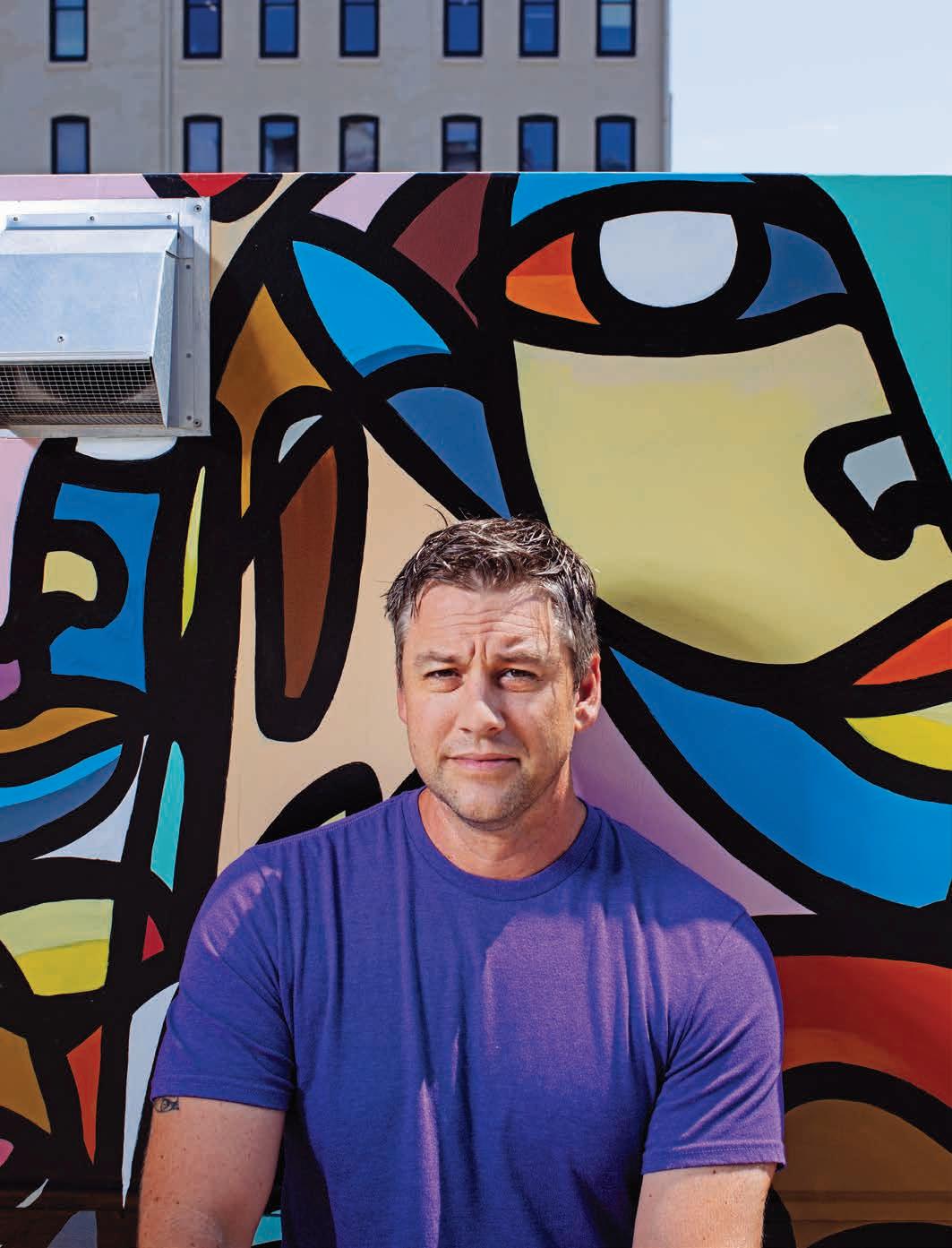
4 minute read
Visual
d
odge Street’s got a whole new look. Th e long center drag dividing the city from east to west has been made over into an open-air museum—one bus stop at a time.
Spanning across both Dodge and Douglas streets, more than a dozen electrical boxes next to ORBT stations now double as canvases for street art. Th ere are oversized wildfl owers, abstract patterns in every hue of the rainbow, and portraits of people smiling at passersby.
Weston Th omson serves as one of the lead artists, along with Betni Kalk. Th omson is the creative brain driving the project. Th ese bold, bright boxes are part of Art + Infrastructure, a public art initiative focused on turning urban spaces into unique creative expressions. Th e project was organized by Omaha by Design and funded by the Faith Charitable Trust.
Th e second purpose of this project was to put local artists to work during the pandemic. Th omson isn’t the only one painting for pedestrians. Once completed, there will be 23 boxes transformed in total by 18 artists. His role in the project was to fi nd a diverse group and oversee designs.
“We thought, ‘What if we put artists to work so that when people reemerge after the pandemic there will be something new in public spaces that inspire us to get outside and feel something exciting,’” Th omson said.
Th ere are few people in the Omaha area better suited for this job. Since moving to the heartland from California in 2009, Th omson has been heavily immersed in the Omaha art scene—not just as a creative but also as an educator and in nonprofi t leadership roles.
“Weston is extremely talented himself but also pays attention to what others are doing and making in our city. He has the connections as well as the planning and patience it takes for large projects,” Kalk said. “Because of all those abilities, he [was] especially helpful in setting this project up for success.”
Just a little over a decade ago, Th omson was teaching a mixture of digital art classes at California State University, Chico, before he was drawn to Omaha. At the time, he had the opportunity to visit Nebraska, and something caught his attention when he did—Omaha’s bustling nonprofi t art scene.
He was looking to try something new, make a greater impact, and thought this community might be the way. So, he decided it was time to trade in palm trees for cornfi elds. He fi nally made the move after landing a job as the education manager at Th e Kent Bellows Studio and Center for Visual Arts, an interdisciplinary studio and education program that matches teens with professional mentors.
“I got my start at Kent Bellows, and that just kind of opened all the doors and introduced me to Omaha in a really impactful way,” Th omson said. “I haven’t seen another program like it. It’s this creative powerhouse where former students are going off to serious art schools or to start their own businesses. Some of those students are currently working on the ORBT project. I owe a lot to Kent Bellows.”
Since that introduction to Omaha, Th omson’s career has fl ourished. His impact in the art community is undeniable, too. He went on to become the community outreach manager at Kent Bellows, where he oversaw murals and other public art projects, and later became the executive director. More recently, he served as the director of community learning at Do Space.
Th rough nonprofi t and education work, Th omson has helped oversee more than 40 public art projects. Today, 15 years into his career, his creative heart beats as loudly as ever. He currently works as an independent artist for Chromatic Black Studio.
Th is studio is the umbrella that all his current creative ventures fall under—of which there are many. His work includes project planning, community art administration, creative services, murals, portraits, graphic design, comic illustration…the list goes on.
Th omson just wrapped that novel, titled System, Book 1: Th e Light Bearer. And once the ORBT boxes are complete, he hopes the Art + Infrastructure project continues to fi nd opportunities that empower local artists to create social environmental experiences.
“Art can off er the whole community a language to speak and process what’s happening in our lives. We are seeing the value of that in our community,” Th omson said. “When you see a piece of powerful work out in the public, it recontextualizes the environment. It reminds you you’re not alone in how you feel. Th ere is more to see and understand than what’s at the surface. I think those things are really important.”








